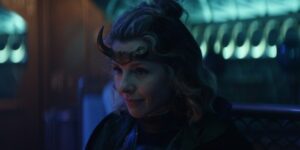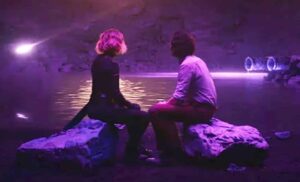Okay, so it’s not exactly the animated She-Ra movie that we all wanted and continuously asked for, but…it’s something. It’s something, all right. News broke today that Amazon Prime is currently in early development of a live-action series centered around the iconic character of She-Ra, and it caused quite the commotion on social media once it became known that the series would be a straightforward reboot or sequel to the original 1980’s animated series, and would have nothing to do with the popular Netflix reboot – She-Ra And The Princesses Of Power – that concluded its five-season run last year.

Now to be fair, any connection between the two would likely be impossible given that this new live-action series is coming from a rival streaming service, and as a fan of Netflix’s She-Ra, I think I can speak for much of the fandom when I say I wouldn’t be too keen on the idea of a live-action version of that highly stylized series (although it still might be preferable to live-action versions of the original character designs…yikes). But as a fan, I can also guess why a lot of people are unhappy about this announcement. It feels like a step back.
When Noelle Stevenson rebooted She-Ra for modern audiences, they did so with the understanding that certain aspects of the original series didn’t work, and needed to be tweaked or played around with to keep the franchise alive and healthy, but also to ensure that the fandom could keep growing. Stevenson’s She-Ra honored the spirit of the original without being beholden to it, and anyone – whether they had watched the original series or not – could jump into the Netflix reboot and get caught up in a really awesome story that hinged on a groundbreaking depiction of queer love.
The significance of She-Ra‘s LGBTQ+ representation cannot be understated, but part of the reason why it works so well is because this story was already queer-coded, intentionally or not. Sorry not sorry to all the homophobes and transphobes out there, but everything about the premise of the original She-Ra (and for that matter its sibling series He-Man) makes ten times more sense when viewed through a queer and/or trans lens. This isn’t even a recent interpretation of either series. So Noelle Stevenson’s decision to make She-Ra queer wasn’t random: it built off the character’s established struggle with her secret identity and double life in such a way that it felt completely organic and thematically cohesive.

But of course, this decision didn’t go over well with a whole bunch of people, mostly adult men who like to call themselves fans of the original She-Ra even though they seem primarily interested in the lead heroine’s physical attributes (and we all had to hear about how modern She-Ra wasn’t sexualized enough for them). These are the same folks who feel the need to justify the fact that they still enjoy He-Man by pretending that it was really dark, edgy, and aggressively straight – despite literally all the evidence to the contrary – because they need to make some point about how women and LGBTQ+ folks are ruining their childhood.
And when the fandom splits down the middle like this, we get things like Masters Of The Universe: Revelations trying to reconcile this completely baseless perception of the original cartoons as some kind of edgelord fantasy with what new generations want from the franchise – and it’s unappealing to pretty much everybody. Until now, because there had only been the one attempt to reboot She-Ra in particular, we’d mostly been having this conversation about He-Man. Now the question on everybody’s lips is: who is this She-Ra live-action series going to be aimed at?
And I think now that we’re having the conversation about She-Ra specifically, our argument as fans of the Netflix reboot feels a lot clearer. Because He-Man, while linked to She-Ra, is technically a separate franchise with a much larger and more widely spread-out fandom, and the benefit of stronger name recognition. A lot of people are going to watch He-Man just because it’s He-Man, and they know that character. She-Ra, on the other hand, is as popular as it is today because of Noelle Stevenson’s series, and because of the fans of that series who still get She-Ra trending on Twitter every few months because of how much we want more of that version.

I’m not even as mad about this news as some people are, because I’m open to Amazon blowing my mind with a great idea, but I do understand where that anger is coming from – and I am disappointed that Dreamworks and Mattel, who own the rights to She-Ra, seem to be pointedly ignoring the potential for a She-Ra movie building off the events of the Netflix reboot. Currently, without many details to go on besides the unquestionable fact that live-action Catra is probably going to be another Sonic the Hedgehog situation, all I can hope is that the renewed interest in this franchise will lead to more She-Ra content in the near future – including an animated movie.
So what do you think? Are you excited to see what Amazon has in store? Share your own thoughts, theories, and opinions, in the comments below!








